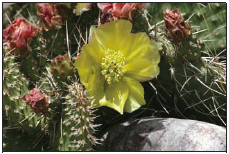New Mexico is known as The Land of Enchantment, a name that captures the state’s cultural history and its beautiful and unique landscape – including its rich and varied natural resources. New Mexico’s natural resources are an important foundation for the state’s scenic natural wonders, tourism and recreation industry, quality of life, and cultural heritage.

Lesser Prairie Chicken photo courtesy of USDA
The New Mexico Office of Natural Resources Trustee (ONRT) ensures that natural resources and the services they provide that are injured or lost because of contamination are restored for the benefit of the environment and the enjoyment of the New Mexico residents and visitors now and in the future.
ONRT’s Mission and Program:
ONRT’s mission is to return injured natural resources and the services they provide to the condition that would have existed absent the release of contamination.
The Natural Resources Trustee through the ONRT implements the Natural Resource Damage Assessment and Restoration Program. The ONRT assesses injury to natural resources caused by the release of hazardous substances or oil, and then seeks compensation from the potentially responsible parties for restoration of those injured resources. Compensation is used to restore, replace, or acquire the equivalent of injured, destroyed or lost natural resources and the services they provide.
ONRT strives to develop cooperative relationships with responsible parties to achieve a more efficient and effective resolution to resource injuries. ONRT also works in partnership with other state and federal agencies to forward its mission.
Benefits
Natural resource damage assessment and restoration has many benefits.

Cactus flower photo courtesy of USDA – New Mexico NRCS

